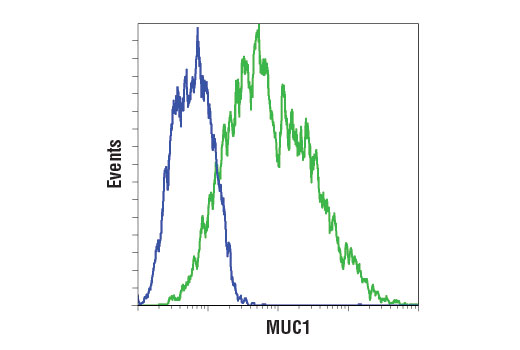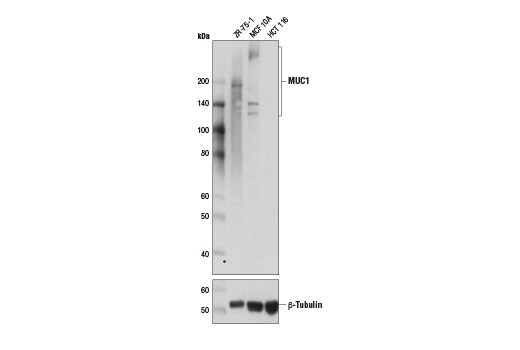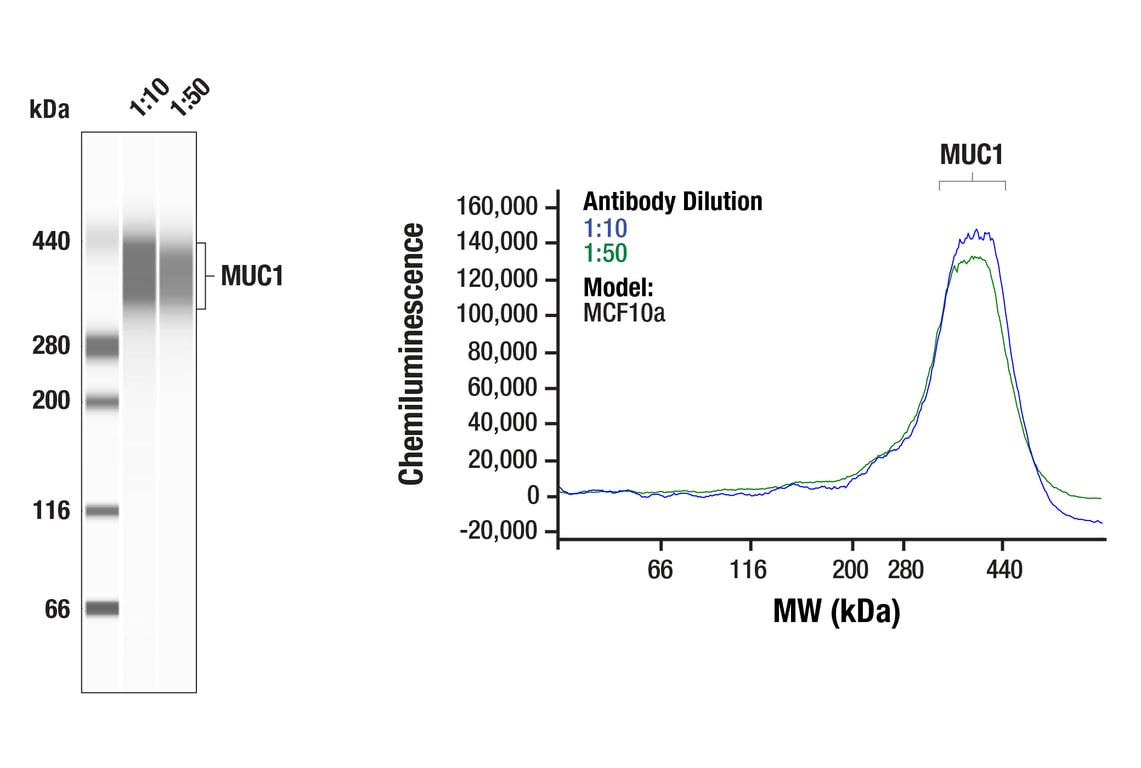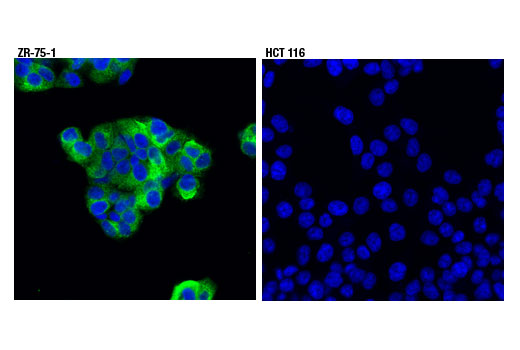 全部商品分类
全部商品分类



Monoclonal antibody is produced by immunizing animals with a synthetic peptide corresponding to residues near the amino terminus of human MUC1 protein.


Product Usage Information
| Application | Dilution |
|---|---|
| Western Blotting | 1:1000 |
| Simple Western™ | 1:10 - 1:50 |
| Immunoprecipitation | 1:50 |
| Immunofluorescence (Immunocytochemistry) | 1:400 |
| Flow Cytometry (Fixed/Permeabilized) | 1:200 |
| Flow Cytometry (Live) | 1:200 |





Specificity/Sensitivity
Species Reactivity:
Human




Supplied in 10 mM sodium HEPES (pH 7.5), 150 mM NaCl, 100 µg/ml BSA, 50% glycerol and less than 0.02% sodium azide. Store at –20°C. Do not aliquot the antibody.
For a carrier free (BSA and azide free) version of this product see product #20246.


参考图片
Flow cytometric analysis of HCT 116 (blue) and ZR-75-1 (green) using MUC1 (D9O8K) XP® Rabbit mAb. Anti-rabbit IgG (H+L), F(ab')2 Fragment (Alexa Fluor® 488 Conjugate) #4412 was used as a secondary antibody.
Western blot analysis of extracts from ZR-75-1, MCF 10A, and HCT 116 cells using MUC1 (D9O8K) XP® Rabbit mAb (upper) and β-Tubulin Antibody #2146 (lower).
Simple WesternTM analysis of lysates (0.82 mg/mL) from MCF10a cells using MUC1 (D9O8K) XP® Rabbit mAb #14161. The virtual lane view (left) shows a single target band (as indicated) at 1:10 and 1:50 dilutions of primary antibody. The corresponding electropherogram view (right) plots chemiluminescence by molecular weight along the capillary at 1:10 (blue line) and 1:50 (green line) dilutions of primary antibody. This experiment was performed under reducing conditions on the JessTM Simple Western instrument from ProteinSimple, a BioTechne brand, using the 66-440 kDa separation module.
Confocal immunofluorescent analysis of ZR-75-1 (positive, left) and HCT 116 (negative, right) cells using MUC1 (D9O8K) XP® Rabbit mAb (green). Blue pseudocolor = DRAQ5® #4084 (fluorescent DNA dye).









 用小程序,查商品更便捷
用小程序,查商品更便捷




